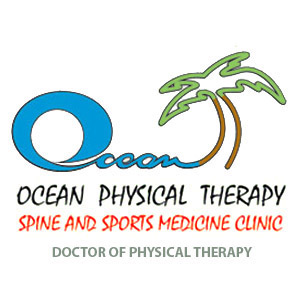
HOT TOPICS
Physical Therapy's Effects Equal to Surgery for Spinal Stenosis Symptoms
Runner's Knee
Joint Replacements
Hip Osteoarthritis
Shoulder Pain
Physical Therapy Determined Most Effective Option to Relieve the "Pain in Your Neck"
| Banishing Back Pain - Preventing work-related injuries can mean simple body mechanics...READ |
| Anterior Cruciate Ligament Reconstruction: - Surgical Management and Postoperative Rehabilitation Considerations ...READ |
| Therapeutic Light - Light is a form of energy that behaves like a wave and also as a stream of particles called photons. ...READ |
| Stopping Pain - The knee is the largest and most complicated joint in the body ...READ |
| Physical Therapy Plays a Vital Role - The unsung heroes for millions ...READ |
| Pain In The Neck - Neck sprains and strains are among the most frequently reported injuries in auto insurance claims ...READ |
| Core Power - As a child, I remember watching my father give a boxing lesson ...READ |
| Back to Basics - The Mechanics of a Proper Lift: Injury Prevention 101!...READ |
| The Way to Stay Fit After Thirty - Here's why walking is such an anti-aging elixir...READ |
| The New Way to Beat Back Pain Surprising info on what causes the ache -
and how to make it stop...READ |
| A Running Start - A recipe for those who want to have a training edge...READ |
Alternative Medicine
Surgical Management and Postoperative Rehabilitation Considerations- ...READ |
| Stressed Out - Elbows and wrists are the joints of finesse, not force ...READ |
| In a Pinch - The majority of sports couldn't be played without using the most mobile joint in the body & the shoulder ...READ |
|
| Back to Basics - Nicole Matoushek |
| The Mechanics of a Proper Lift: Injury Prevention 101! |
Despite the increased awareness of proper lifting habits, many lower back injuries still occur as a result of manual material handling. Lifting not only involves both dynamic and static postures, but also the handling of a foreign object. Many injuries can be prevented by following proper lifting techniques:
- Do not twist or turn the body during a lift. If you must change directions, do so by changing the position of the feet as opposed to twisting the spine.
- Keep the load close to your body; this reduces the joint forces to the spine by reducing the lever arm.
- Keep lifting materials in small sizes. Using smaller-sized materials reduces the joint forces on the spine by reducing the lever arm.
- Test the weight prior to lifting. Use an assistive device if the load is heavy. This technique will also reduce injury from lifting an item that is much lighter than anticipated.
- Clear the path to the final destination to prevent slip and fall injuries.
- Use the legs in both lifting and lowering the item. Place your feet apart and close to the object. Keep the load centered and bend at the knees, as opposed to the waist. Use the legs to do the work as opposed to the back.
- Set the load down slowly in a controlled manner. Do not drop it or let it go until it is on the ground.
- Push an object as opposed to pulling it.
Source: Matoushek, Nicole (2004, January 5). Back to basics: the mechanics of a proper lift. Advance for Physical Therapists and PT Assistants p. 38.
|